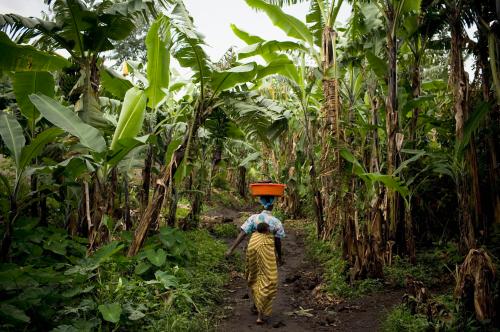Earlier this month, the International Monetary Fund released its biannual sub-Saharan Africa Regional Economic Outlook. The report, subtitled “Navigating Uncertainty,” provides an update on key macroeconomic trends and includes special chapters on the impact of competitiveness on growth and government arrears in sub-Saharan African countries. Updating its forecast, the report lowers forecast for the region’s 2019 GDP growth from 3.6 to 3.2 percent and emphasizes downside risks including rising protectionism, a slowdown in major global economies, and reversal in capital flows due to tightening global financial conditions.
Using a new dataset, the report finds that domestic arrears—“overdue payments on financial obligations from primary (government) spending”—are a persistent problem for many sub-Saharan African countries. As Figure 1 shows, sub-Saharan African countries had average arrears of 3.3 percent of GDP in 2018, with arrears particularly high for oil exporters, at 8.5 percent of GDP. Average arrears for Africa have risen since 2012 and peaked in 2016 around 4 percent of GDP (Figure 2). The increase is particularly notable for oil exporters as these countries suffered the most from the commodity price shock of 2014.
Figure 1: Sub-Saharan Africa: Stock of Domestic Arrears by Country Group, 2018
 Source: International Monetary Fund, Sub-Saharan Africa Regional Economic Outlook October 2019Figure 2: Sub-Saharan Africa: Stock of domestic arrears, 2005–17
Source: International Monetary Fund, Sub-Saharan Africa Regional Economic Outlook October 2019Figure 2: Sub-Saharan Africa: Stock of domestic arrears, 2005–17
 Source: International Monetary Fund, Sub-Saharan Africa Regional Economic Outlook October 2019
Source: International Monetary Fund, Sub-Saharan Africa Regional Economic Outlook October 2019
Countries with weak fiscal and public financial management systems are more susceptible to a build-up of overdue payments. Issues of fiscal and public management can include unrealistic budgets, weak cash management systems, and delays in processing payments. Cyclical fiscal shocks like the commodity price crash in 2014 tend to exacerbate weaknesses in key public financial management systems, leading to high levels of arrears. As Figure 3 shows, the decline in Brent crude prices since 2014 led to an uptick in domestic arrears in for oil-exporters in the Central African Economic and Monetary Community.
Figure 3: Accumulation of Domestic Arrears Following Fiscal Shocks
 Source: International Monetary Fund, Sub-Saharan Africa Regional Economic Outlook October 2019.
Source: International Monetary Fund, Sub-Saharan Africa Regional Economic Outlook October 2019.
Domestic arrears can impact the economy through several channels and lower growth. Private businesses are more likely to face delayed payments compared to government employees or state-owned enterprises. Large arrears weaken the private sector, particularly in liquidity-constrained economies. Spending funded by arrears tends to have lower fiscal multipliers, reducing the effectiveness of fiscal policy. Additionally, this can lower citizens and businesses trust in the government. The report recommends that countries with high arrears develop a clearance strategy that emphasizes transparency, inclusive growth, and macroeconomic stability. In the long-term, the report recommends that countries strengthen their institutions to lower the likelihood of arrears accumulation.
For more on public debt, see the AGI policy brief, “Is sub-Saharan Africa facing another systemic sovereign debt crisis?”






Commentary
Figure of the week: Government domestic arrears rise for oil-exporters in sub-Saharan Africa
October 29, 2019